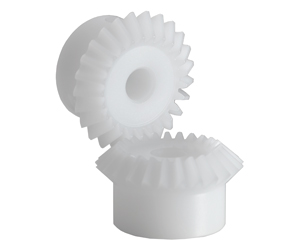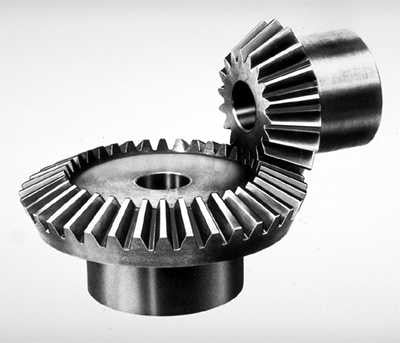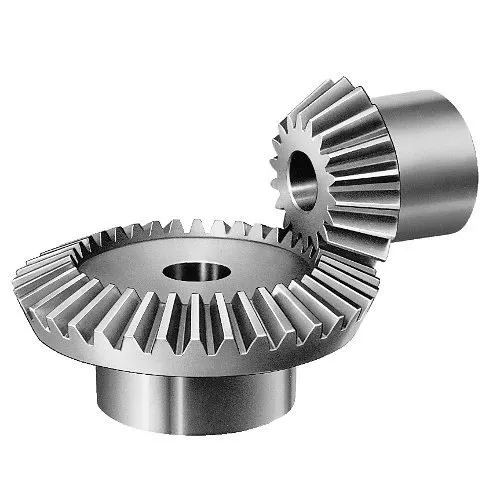Product Description
Hypoid Gear Best Quanlity Miter Spiral Wheel Set 90 Degree Forged Plastic Sintered Stainless Steel Metal Helical Tooth CZPT for Test Machine Spacer Hypoid Gear
Application of Hypoid Gear
Hypoid gears are a type of gear that are used to transmit rotational power, or torque, between 2 shafts at right angles. They are similar to spiral bevel gears, but the pinion axis is offset from the gear axis. This offset creates a larger contact area between the teeth, which results in smoother operation and less noise. Hypoid gears are also more efficient than spiral bevel gears, and they can transmit more torque.
Hypoid gears are used in a wide variety of applications, including:
- Automotive: Hypoid gears are used in the rear axles of most cars and trucks. They are also used in some front-wheel drive vehicles.
- Machine tools: Hypoid gears are used in machine tools, such as lathes, mills, and grinders.
- Robotics: Hypoid gears are used in robots to transmit motion and power.
- Aerospace: Hypoid gears are used in aircraft and spacecraft to control movement and stability.
- Industrial machinery: Hypoid gears are used in a wide variety of industrial machinery, such as conveyor belts, elevators, and cranes.
- Consumer products: Hypoid gears are used in a variety of consumer products, such as power tools, appliances, and toys.
The specific application of a hypoid gear will depend on the requirements of the system in which it is being used. For example, gears used in an engine need to be able to withstand high loads and temperatures, while gears used in a robot need to be able to move quickly and precisely.
Hypoid gears are made from a variety of materials, including steel, aluminum, and bronze. The choice of material will depend on the application and the required properties of the gear. For example, steel gears are typically used in high-load applications, while aluminum gears are used in applications where weight is a concern.
Hypoid gears are manufactured using a variety of methods, including casting, machining, and powder metallurgy. The manufacturing method will depend on the size, complexity, and quantity of gears being produced.
Hypoid gears are a critical component in many systems and applications. They are available in a wide variety of sizes, materials, and manufacturing methods to meet the needs of a variety of applications.
Here are some of the advantages of using hypoid gears:
- Smoother operation
- Less noise
- More efficient
- Can transmit more torque
Here are some of the disadvantages of using hypoid gears:
- More expensive than other types of gears
- More complex to manufacture
- Can be more difficult to lubricate
Overall, hypoid gears are a versatile and efficient type of gear that can be used in a wide variety of applications.
A hypoid is a type of spiral bevel gear whose axis does not intersect with the axis of the meshing gear. The shape of a hypoid gear is a revolved hyperboloid (that is, the pitch surface of the hypoid gear is a hyperbolic surface), whereas the shape of a spiral bevel gear is normally conical.
| Application: | Motor, Electric Cars, Motorcycle, Machinery, Marine, Toy, Agricultural Machinery, Car |
|---|---|
| Hardness: | Hardened Tooth Surface |
| Gear Position: | Internal Gear |
| Manufacturing Method: | Cast Gear |
| Toothed Portion Shape: | Worm Gear |
| Material: | Stainless Steel |
| Samples: |
US$ 9999/Piece
1 Piece(Min.Order) | |
|---|

Can miter gears be used in precision machinery and equipment?
Miter gears can indeed be used in precision machinery and equipment. Miter gears are a type of bevel gears that transmit rotational motion between intersecting shafts at a 90-degree angle. Their design and construction make them suitable for various applications, including those requiring precision.
Here are some reasons why miter gears are suitable for precision machinery and equipment:
- Accuracy: Miter gears can provide accurate and precise motion transmission due to their meshing geometry. The teeth of miter gears are designed to ensure proper contact and alignment, resulting in minimal backlash and high positioning accuracy.
- Compact Size: Miter gears have a compact design, making them suitable for applications where space is limited. Their small form factor allows for efficient use of available space in precision machinery and equipment.
- Efficiency: Miter gears can achieve high efficiency in power transmission. With proper tooth profile design and alignment, miter gears can minimize energy losses and maximize the transfer of rotational motion, which is important for precision machinery that requires smooth and efficient operation.
- Smooth Operation: Miter gears can provide smooth and quiet operation when properly designed and manufactured. This is particularly important in precision machinery and equipment, where noise and vibration need to be minimized to ensure accurate and reliable performance.
However, it’s important to consider the specific requirements of the precision machinery or equipment when selecting miter gears. Factors such as load capacity, speed, lubrication, and maintenance should be taken into account to ensure optimal performance and longevity.
In conclusion, miter gears can be successfully used in precision machinery and equipment, offering accuracy, compactness, efficiency, and smooth operation when appropriately applied and integrated into the system.

Can miter gears be used to redirect rotational motion in machinery?
Yes, miter gears can be used to redirect rotational motion in machinery. Let’s delve into the details:
1. Change in Direction:
Miter gears are specifically designed to change the direction of rotational motion. By meshing two miter gears together, the input rotational motion can be redirected at a 90-degree angle. This ability to change the direction of rotation makes miter gears ideal for applications where a change in the orientation of the machinery or the direction of movement is required.
2. Perpendicular Shaft Arrangement:
Miter gears achieve rotational redirection by utilizing a perpendicular shaft arrangement. The intersecting shafts of the gears allow for the input and output shafts to be oriented at a right angle. As a result, when one gear rotates, it transfers the rotational motion to the other gear at a 90-degree angle, redirecting the motion along a different axis.
3. Compact Design:
Miter gears have a compact design, which is advantageous when redirecting rotational motion in machinery. Their conical shape and intersecting shaft arrangement allow for efficient use of space. This compactness is particularly beneficial in applications where there are space constraints or a need to optimize the overall size of the machinery.
4. Precise and Reliable Redirection:
Miter gears provide precise and reliable redirection of rotational motion. When designed and manufactured with precision, the straight teeth of miter gears ensure smooth meshing and engagement, resulting in minimal backlash and accurate transmission of rotational motion. This precision allows for consistent and dependable redirection of the rotational motion without loss of power or efficiency.
5. Speed Adjustment:
In addition to changing the direction of rotation, miter gears can also be used to adjust the speed of the output shaft. By varying the number of teeth on the gears or incorporating additional gears, the rotational speed can be increased or reduced as desired. This speed adjustment capability adds flexibility to the machinery, enabling it to adapt to different operational requirements.
6. Common Applications:
Miter gears find wide applications in various machinery where rotational motion redirection is needed. They are commonly used in automotive differentials, robotics, machine tools, printing machinery, camera lenses, and many other mechanical systems. Their ability to redirect rotational motion reliably and efficiently makes them a popular choice in these industries and beyond.
In summary, miter gears are well-suited for redirecting rotational motion in machinery. Their ability to change the direction of rotation, compact design, precise and reliable operation, speed adjustment capability, and widespread use in different industries make them a valuable component for achieving rotational motion redirection in various mechanical systems.

Can you explain the unique design of miter gear teeth?
The design of miter gear teeth is distinct and plays a crucial role in the functionality of these gears. Here’s a detailed explanation:
1. Tooth Shape:
Miter gear teeth have a straight shape, similar to spur gears. However, unlike spur gears where the teeth are parallel to the gear axis, miter gear teeth are cut at a right angle to the gear’s face. This allows the teeth to engage correctly when two miter gears mesh together at a 90-degree angle.
2. Equal Number of Teeth:
Miter gears have an equal number of teeth on both gears in a pair. This ensures proper meshing and smooth transmission of rotational motion between the gears. The equal number of teeth is essential for maintaining a constant speed ratio and preventing any slippage or irregular motion.
3. Conical Shape:
Another unique aspect of miter gear teeth is the conical shape of the gears themselves. The teeth are cut on the conical surface, which allows for proper engagement and transmission of motion between intersecting shafts. The conical shape ensures that the teeth mesh correctly, providing efficient power transmission at the desired angle.
4. Meshing at 90-Degree Angle:
Miter gears are designed to mesh at a 90-degree angle, allowing for power transmission between intersecting shafts. The teeth are specifically cut to facilitate this arrangement, ensuring that the gears engage smoothly and transmit rotational motion without any loss or disruption.
5. Tooth Contact and Load Distribution:
When miter gears mesh, the contact between the teeth occurs along a single line, known as the line of contact. This concentrated contact area enables effective load distribution and ensures that the gear teeth bear the transmitted torque evenly. Proper tooth contact is vital for minimizing wear and maintaining the longevity of the gears.
6. Lubrication and Noise Reduction:
The unique design of miter gear teeth can influence lubrication and noise levels. Adequate lubrication is essential to reduce friction and wear between the teeth during operation. Additionally, the straight tooth profile of miter gears tends to produce more noise compared to gears with helical or curved teeth. Proper lubrication and noise reduction measures are often employed to optimize the performance of miter gears.
In summary, the unique design of miter gear teeth includes their straight shape, equal number of teeth, conical shape of the gears, meshing at a 90-degree angle, tooth contact along a line, and considerations for lubrication and noise reduction. These design features ensure efficient power transmission, proper load distribution, and reliable operation in mechanical systems that utilize miter gears.


editor by CX 2023-09-11